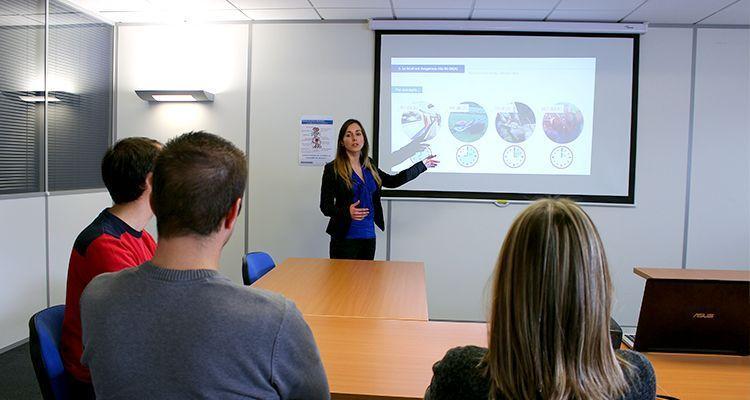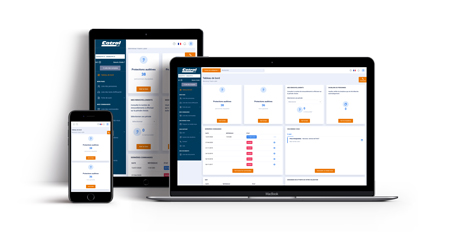Raise awareness about Occupational Noise-Induced Hearing Loss (ONIHL)
On average, hearing protection devices are only worn for about 38 percent of the time that a worker is exposed to excessive noise. A study from the Department of Environmental and Occupational Health Sciences shows that raising awareness among employees and providing proper training can have a positive impact on their wear rate.
Educate your employees so that you can:
- Reduce the risk of occupational noise-induced hearing loss and deafness
- Comply with occupational health and safety regulations regarding training for at-risk employees
- Improve their hearing protection wear rate when they are exposed to noise
- Motivate them so that they have a positive attitude towards hearing preservation. Ensure that they understand what is at stake, and how important it is to be protected

Raising awareness starts when the ear moulds are taken

The first key step in your hearing conservation campaign is when the ear impressions (moulds) are taken. This is done on-site, by a hearing protection specialist, at a time convenient for you.
During this appointment, your employees will learn about:
- Noise and how the ear works
- The risks of being exposed to noise without adequate hearing protection
- Why they should wear their hearing protectors 100 percent of the time they are exposed to noise
- How the ear moulds are taken
- The hearing protection devices they will be provided with
Auditools: free awareness and training tools
Download free posters and awareness-raising tools to help your hearing conservation program:
- “About Noise” posters explain how the ear works and the impact of noise on the unprotected ear
- “Noise Scale” is a great reminder about how loud your specific industry can be, and how exposed your employees are
- Other downloadable content reminds your employees how important it is to be protected the entire time they are exposed to noise, during working time as well as in their leisure time

Successfully implement your hearing conservation campaign
You want to reduce noise related risks in your business, but where to begin? What hearing protection should you choose? How to involve your employees and facilitate the implementation of your selected solution?
Start with these three easy steps:
- Setup a timeframe for your campaign
- Use various communication channels, so your campaign can have a better impact
- Repeat your messages frequently
Your questions about raising awareness among your employees:
Occupational Noise-Induced Hearing Loss (ONIHL) is a perceptive deafness that is caused by exposure to noise in the workplace. It is characterised by a reduction in hearing acuity: the transmission of sound is correct, but its perception is defective. It corresponds to the destruction of ciliated cells.
If the deafness is identified as an occupational disease, the organization is responsible.
In terms of safety and prevention, the employer has an obligation to achieve a result. If an employee is diagnosed with ONIHL due to their professional activity, but the employer provides him with equipment for prevention and protection, the law will take into account all of these elements.
When you train your employees on noise-related risks, you make them responsible and conscious of the fact that they are exposing themselves to an invisible danger every day. They become responsible for their own hearing health and adopt proper behaviours: wearing their hearing protection devices constantly during exposure, not taking them off while communicating, and so on. If hearing protection devices are properly worn, the risk of noise-induced hearing loss is reduced.
A hearing conservation program is a set of actions taken to train and inform your employees about Occupational Noise-Induced Hearing Loss.
Simple suggestions that will ensure a successful hearing conservation program:
- Plan numerous campaigns throughout the year
- Multiply channels of communication for greater impact: videos, comics, games, posters, and so on
- Repeat your messages regularly
